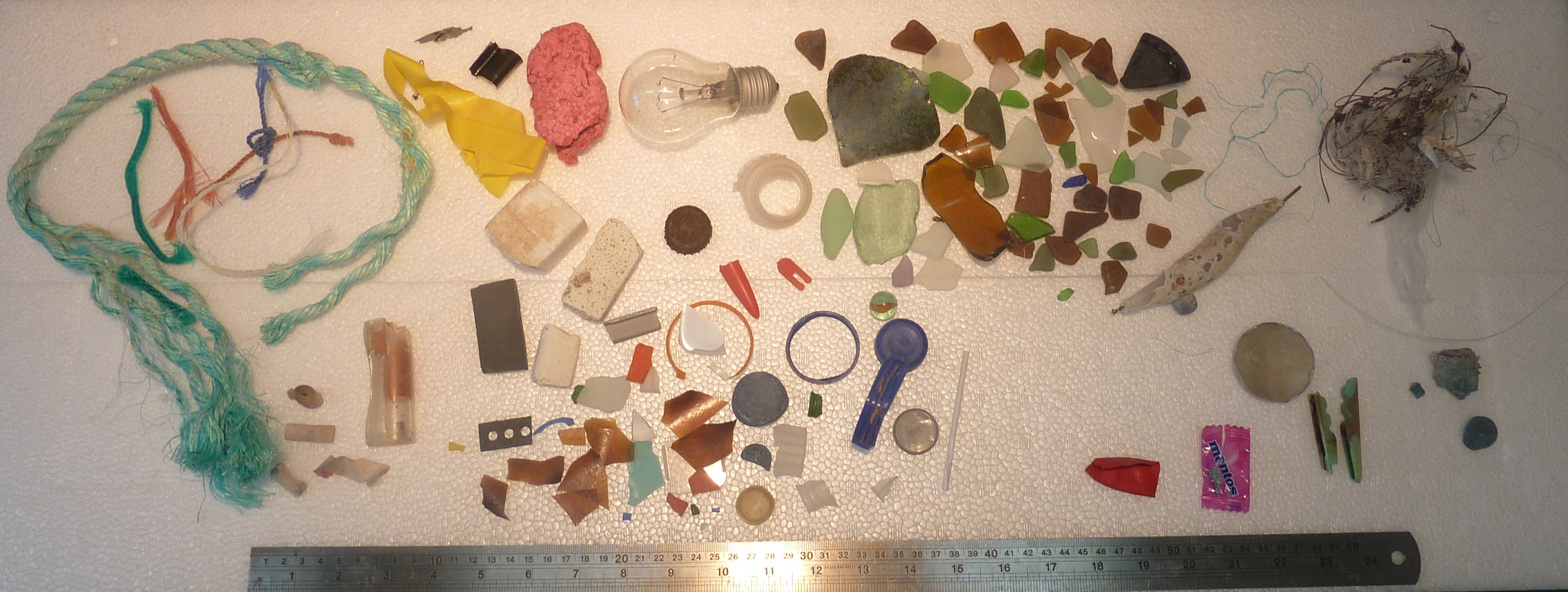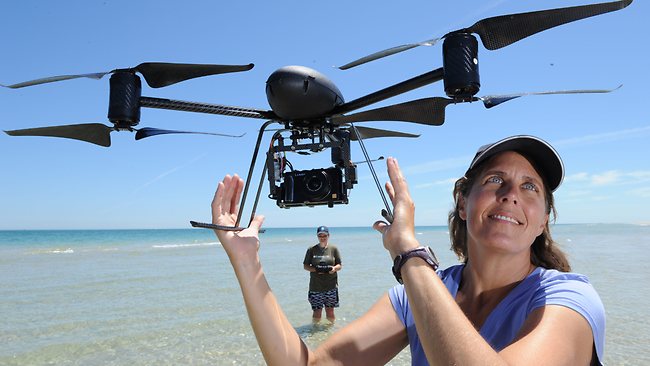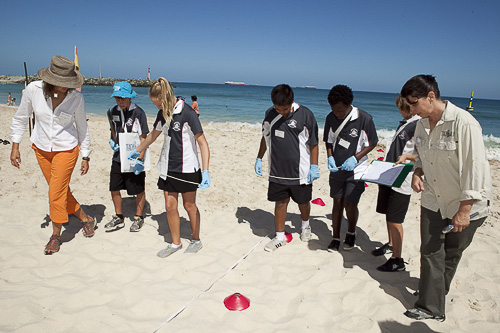Just a few things we’ve found on our beaches.
By Fiona Henderson
With summer just around the corner, many of us will be shaking out our beach towels, grabbing our buckets and spades, and heading to the beach. But sand and surf may not be all you find at the beach this summer.
Marine debris. It’s ugly, pervasive and threatening our ocean critters. Thank the stars for Dr Denise Hardesty.
Ecologist Dr Denise Hardesty with the ‘scientific predator’, a remote-controlled helicopter documenting marine debris around our coasts. Image: Tricia Watkinson
Denise leads a team of scientists, school students and community members who have been working their way around the Australian coastline taking note of the garbage that has washed up on the beach.
From light globes to cigarette butts, you name it, they’ve probably found it. And now Denise is offering her time to talk about the project LIVE on the CSIRO events Ustream channel from 10am till 10.30am AEDST tomorrow, Friday 16th November.
“Marine debris is a major threat to Australia’s wildlife,” said Denise. “So that we can better manage this problem, we’re studying its sources and effects.”
One such effect is ocean birds carrying 7% of their body weight in plastic that is eaten off the ocean surface, as this ABC Catalyst video explains:
As a result of their research the team are hoping to achieve three things.
- Compile a list of which species are more or less likely to be affected by marine rubbish
- Estimate the effects that things like currents, local population, council and state waste management policies (e.g. rubbish bins and bottle refunds) and other factors have on the amount of rubbish in the ocean; and
- Identify a set of sites that can be used to monitor both marine rubbish and its impacts on wildlife over the long-term and at a low-cost.
“Our goal is to support people, both politicians and consumers, in making decisions about their behaviour and their investments that are based on scientific information,” said Denise.
School students and communities across Australia are helping Denise and her team with their research. If you’d like to find out how to get involved, tune in to our live stream event tomorrow.
Interested to learn more? Get your questions ready and join us on our Ustream channel tomorrow from 10am till 10.30am AEDST. You can also follow the conversation on Twitter with #marinedebris. All you need is a computer and internet connection, so no excuses.
Contact: Fiona Henderson
The national marine debris research is part of TeachWild, a national three-year research and education program developed by Earthwatch Australia together with CSIRO and Founding Partner Shell.





15th November 2012 at 9:59 am
Reblogged this on Helix @ CSIRO and commented:
Add your thoughts here… (optional)